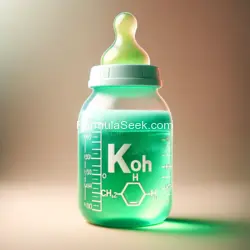
Understanding Potassium Hydroxide: Its Role in Infant Formula
In infant nutrition, ensuring that each ingredient contributes to the health and development of babies is paramount. One such ingredient, which might initially raise eyebrows due to its chemical sounding name, is potassium hydroxide. To understand why it's added to infant formula, it's essential to delve into potassium hydroxide and its role in infant nutrition.
What is Potassium Hydroxide?
Potassium hydroxide, often denoted by its chemical formula KOH, is an inorganic compound. In its pure form, it's a white solid that is highly alkaline and soluble in water. It's often used in various industrial and chemical applications. However, when we talk about its use in food, particularly in infant formula, it's important to note that it's used in very controlled and safe quantities.
The Role of Potassium Hydroxide in Infant Formula
The primary reason potassium hydroxide is added to infant formula is for its ability to regulate acidity. Here's how it plays a crucial role:
pH Balance: Infant formulas, like many processed foods, need to maintain a specific pH level to ensure stability and prevent spoilage. Potassium hydroxide is used to neutralize excess acidity, thereby maintaining the formula at a pH level that is safe and palatable for infants.
Nutrient Availability: The pH level of the formula can affect how well certain nutrients are absorbed by the infant's body. By keeping the formula at the right pH, potassium hydroxide helps in maximizing the availability of these nutrients to the baby.
Safety and Quality Control: Ensuring that infant formula is of the highest safety standard is crucial. The addition of potassium hydroxide plays a role in maintaining the formula's consistency and preventing any unwanted bacterial growth.
Is It Safe?
Safety is a natural concern for any parent regarding what's in their baby's formula. The use of potassium hydroxide in infant formula is regulated by food safety authorities, such as the U.S. Food and Drug Administration (FDA) and the European Food Safety Authority (EFSA). These organizations ensure that the levels used are safe and pose no risk to infants when the formula is consumed as directed.
Conclusion
While the name potassium hydroxide may sound intimidating, its role in infant formula is essentially a matter of ensuring the right balance and safety of the product. Its inclusion in formula follows strict guidelines and is deemed safe by leading health authorities. As always, if there are concerns about infant nutrition, it's best to consult a pediatrician or a healthcare provider.
In summary, the addition of potassium hydroxide in infant formula is a testament to the meticulous care that ensures that infant nutrition is safe and effective, catering to the delicate needs of a growing baby.



